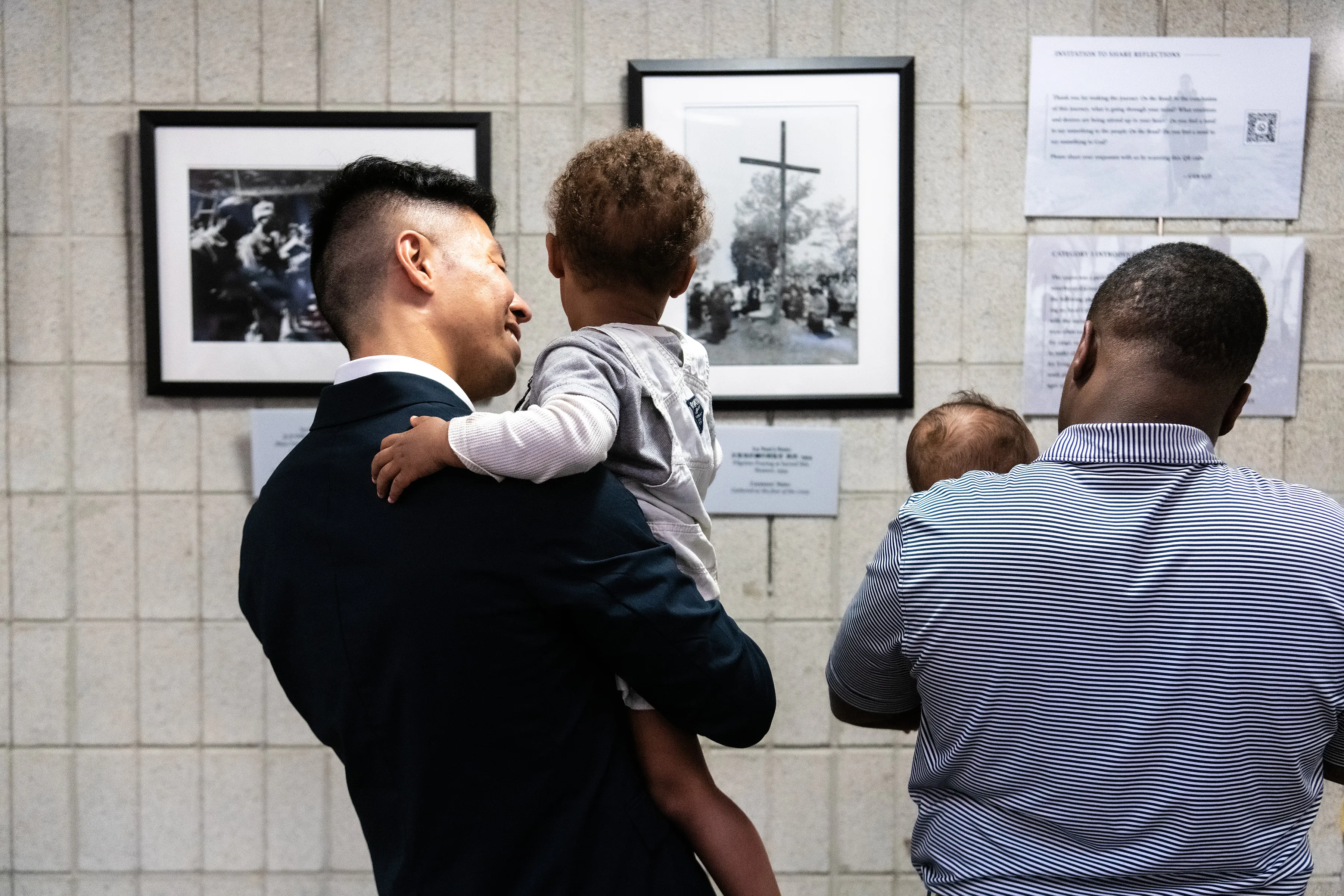
Baltimore, Md., Jul 2, 2021 / 03:01 am (CNA).
The exhibit, which is called the “Seton Family Treasures,” contains “some of the most amazing artifacts that are known to exist” related to the Seton family, explained Rob Judge, the executive director of the shrine.
Judge said that it was an “immense gift for all of us” to be able to see the artifacts, and that the exhibit “helps us to know her; and helps us to tell her story.”
Among the “Seton Family Treasures” that are now on display at the shrine are the “iconic bonnet” worn by St. Elizabeth Ann Seton as part of the habit of the Sisters of Charity of St. Joseph; books owned by Mother Seton, her daughter Catherine, and her father; Catherine’s baptismal gown; Mother Seton’s personal rosary and crucifix; as well as the miniature wedding portraits that were exchanged with her husband on her wedding day.
The shrine acquired the items from the Sisters of Charity of New York; the Sisters of Charity of Cincinnati; and the Daughters of Charity. The three orders have a common lineage with the Sisters of Charity of St. Joseph, the order founded by Mother Seton as the first religious order for women in the United States.
Catherine O’Donnell, a professor of history at Arizona State University and the author of “Elizabeth Seton: American Saint” told CNA that she was “thrilled” the artifacts were now available for the public to see: “To see the portraits that I’ve only ever seen in reproduction, was just ‘whew!’ That was very exciting.”
And while she was particularly taken by the miniature wedding portraits, O’Donnell told CNA that seeing Mother Seton’s bonnet and shawl in person prompted a “visceral response” more than anything else.
“Her spiritual daughters [the Daughters of Charity and Sisters of Charity], you know, wore a habit based on [the shawl and bonnet] for years,” she said. And while the habit eventually changed, “they were still very connected to that.”
The wedding portraits, explained O’Donnell, portray “a very human Elizabeth.”
“No one knew the future when they painted that.” she said. “She is a lovely young woman with an almost arch expression on her face, which is very characteristic.”
At the time of the then-Elizabeth Ann Bayley’s wedding to William Magee Seton, she was Episcopalian. Her and her husband had five children, of whom three lived into adulthood. Her daughter Catherine would eventually become the first American in the Sisters of Mercy.
Following William’s death from tuberculosis in 1803, she began to be drawn to Catholicism. She was received into the Church in 1805 and confirmed by Bishop John Carroll of Baltimore the following year.
Initially she faced scepticism from Bishop Carroll when she approached the subject of confirmation, O’Donnell explained. Carroll was worried about the optics of “convincing a Protestant widow to become Catholic.”
Eventually, Bishop Carroll became convinced of her sincerity that she was making the decision to become Catholic on her own, a decision that O’Donnell said took “months and months and months and months.”
After becoming Catholic, Elizabeth Seton continued to wear the traditional clothing of a widow–a black bonnet. That black bonnet would eventually become part of the habit of the religious order she founded.
Mother Seton died Jan. 4, 1821, at the age of 46. She was canonized Sept. 14, 1975, by St. Paul VI.
If you value the news and views Catholic World Report provides, please consider donating to support our efforts. Your contribution will help us continue to make CWR available to all readers worldwide for free, without a subscription. Thank you for your generosity!
Click here for more information on donating to CWR. Click here to sign up for our newsletter.







Leave a Reply